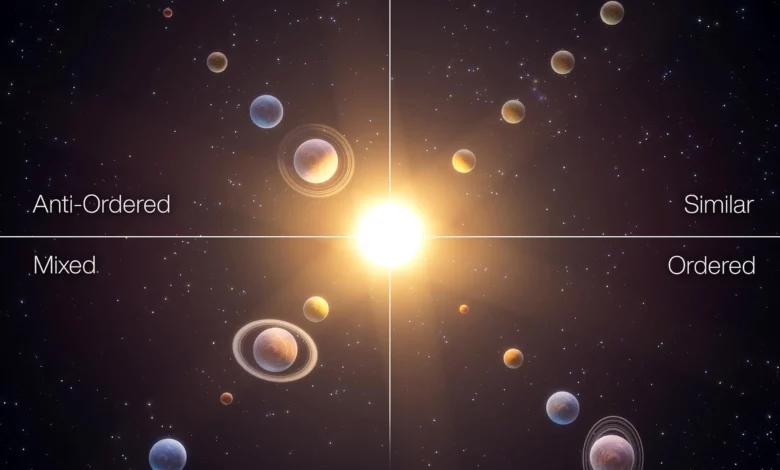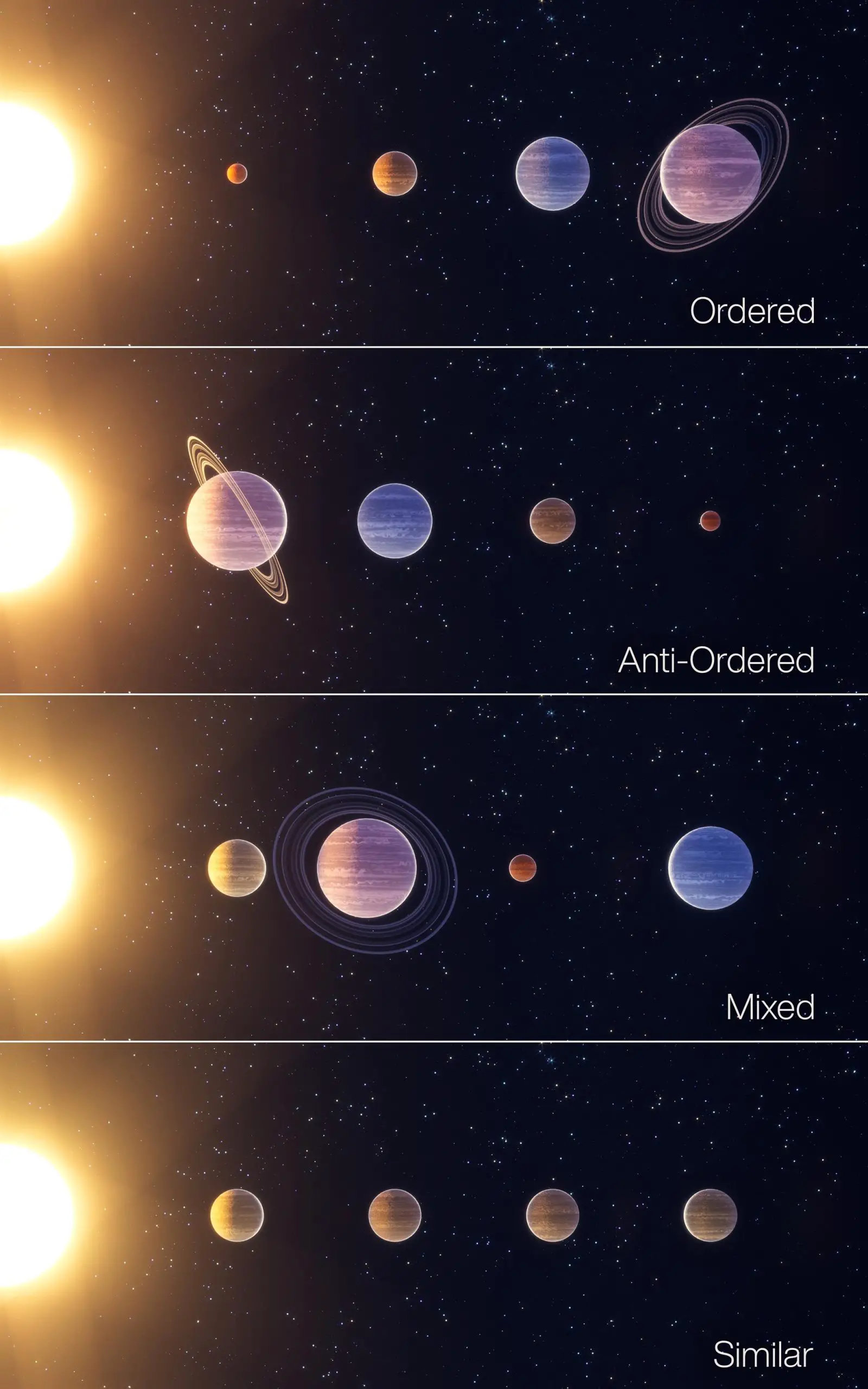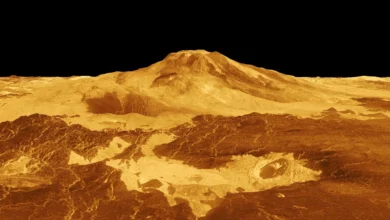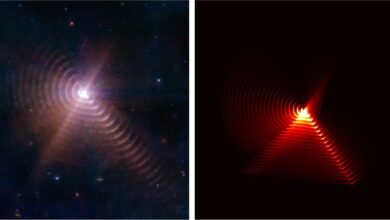
Astronomers have long been aware that planetary systems are not necessarily structured like our solar system. Researchers from the Universities of Bern and Geneva, as well as from the National Centre of Competence in Research PlanetS, have now shown for the first time that there are in fact four types of planetary systems.
In our solar system, everything seems to be in order: The smaller rocky planets, such as Venus, Earth, or Mars, orbit relatively close to our star. The large gas and ice giants, such as Jupiter, Saturn or Neptune, on the other hand, move in wide orbits around the sun. In two studies published in the scientific journal Astronomy & Astrophysics, researchers from the Universities of Bern and Geneva and the National Centre of Competence in Research (NCCR) PlanetS show that our planetary system is quite unique in this respect.
Like peas in a pod
“More than a decade ago, astronomers noticed, based on observations with the then-groundbreaking Kepler telescope, that planets in other systems usually resemble their respective neighbors in size and mass – like peas in a pod,” says study lead author Lokesh Mishra, researcher at the University of Bern and Geneva, as well as the NCCR PlanetS. But for a long time, it was unclear whether this finding was due to limitations of observational methods. “It was not possible to determine whether the planets in any individual system were similar enough to fall into the class of the ‘peas in a pod’ systems, or whether they were rather different – just like in our solar system,” says Mishra.
Therefore, the researcher developed a framework to determine the differences and similarities between planets of the same systems. And in doing so, he discovered that there are not two, but four such system architectures.

Four classes of planetary systems
“We call these four classes ‘similar’, ‘ordered’, ‘anti-ordered’ and ‘mixed’,” says Mishra. Planetary systems in which the masses of neighboring planets are similar to each other, have similar architecture. Ordered planetary systems are those, in which the mass of the planets tends to increase with distance from the star – just as in our solar system. If, on the other hand, the mass of the planets roughly decreases with distance from the star, researchers speak of an anti-ordered architecture of the system. And mixed architectures occur when the planetary masses in a system vary greatly from planet to planet.

“This framework can also be applied to any other measurements, such as radius, density or water fractions,” says study co-author Yann Alibert, Professor of Planetary Science at the University of Bern and the NCCR PlanetS. “Now, for the first time, we have a tool to study planetary systems as a whole and compare them with other systems.”
The findings also raise questions: Which architecture is the most common? Which factors control the emergence of an architecture type? Which factors do not play a role? Some of these, the researchers can answer.
A bridge spanning billions of years
“Our results show that ‘similar’ planetary systems are the most common type of architecture. About eight out of ten planetary systems around stars visible in the night sky have a ‘similar’ architecture,” says Mishra. “This also explains why evidence of this architecture was found in the first few months of the Kepler mission.” What surprised the team was that the “ordered” architecture – the one that also includes the solar system – seems to be the rarest class.

According to Mishra, there are indications that both the mass of the gas and dust disk from which the planets emerge, as well as the abundance of heavy elements in the respective star play a role. “From rather small, low-mass disks and stars with few heavy elements, ‘similar’ planetary systems emerge. Large, massive disks with many heavy elements in the star give rise to more ordered and anti-ordered systems. Mixed systems emerge from medium-sized disks. Dynamic interactions between planets – such as collisions or ejections – influence the final architecture,” Mishra explains.
“A remarkable aspect of these results is that it links the initial conditions of planetary and stellar formation to a measurable property: the system architecture. Billions of years of evolution lie in between them. For the first time, we have succeeded in bridging this huge temporal gap and making testable predictions. It will be exciting to see if they will hold up,” Alibert concludes.
References:
“Framework for the architecture of exoplanetary systems – I. Four classes of planetary system architecture” by Lokesh Mishra, Yann Alibert, Stéphane Udry and Christoph Mordasini, 14 February 2023, Astronomy and Astrophysics.
DOI: 10.1051/0004-6361/202243751
“Framework for the architecture of exoplanetary systems – II. Nature versus nurture: Emergent formation pathways of architecture classes” by Lokesh Mishra, Yann Alibert, Stéphane Udry and Christoph Mordasini, 14 February 2023, Astronomy and Astrophysics.
DOI: 10.1051/0004-6361/202244705
“Finding order in planetary architectures” by Luca Maltagliati, 18 January 2023, Nature Astronomy.
DOI: 10.1038/s41550-023-01895-0





